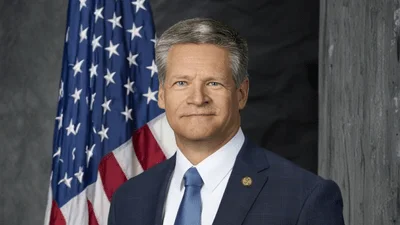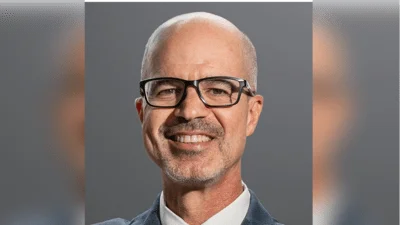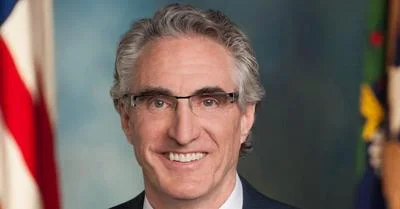The Congressional Record is a unique source of public documentation. It started in 1873, documenting nearly all the major and minor policies being discussed and debated.
“DOLE ECONOMIC PLAN: VOODOO II” mentioning the U.S. Dept. of Energy was published in the Senate section on pages S10660-S10661 on Sept. 17, 1996.
The publication is reproduced in full below:
DOLE ECONOMIC PLAN: VOODOO II
Mr. EXON. Mr. President, last week, I delivered the first of a number of speeches on the fiscal follies of the Dole economic plan. I gave a brief history of voodoo economics in the Reagan-Bush years, its failure, and the economic carnage it left in its wake. I hope that I was able to shed a little light on an issue of great concern to all Americans.
Today, I ask the American people to look at the Dole economic plan--
advanced voodoo economics, if you will. And if it wasn't for all of the harm it would cause, the Dole plan would be pretty amusing to this Senator who has worked on the budget for a long, long time.
I must say that Bob Dole's supply-side plan reminds me of a 17th century scientist by the name of van Helmont who actually had a formula for making mice out of old underwear. At its heart, that's the Dole plan: taking bits and pieces of discarded economics and turning them into something unrealistic.
Last week, I had the privilege to join with Democratic colleagues at an important forum on the Dole economic plan. Benjamin Friedman, professor of political economy at Harvard University, warned, ``The Dole-Kemp proposal is a reprise of a gamble that failed.''
Former Budget Director Charles Schultze concluded,
A reasonable and prudent person would have to question severely the wisdom of repeating what the country did 15 years ago--enacting a large tax cut before budget balance is well in hand.
The Dole plan is mired in the same specious supply-side arguments and optimistic assumptions that made up the economic quicksand of 15 years ago. The original trickle-down economics delivered mediocre economic performance and a mountain of debt. Is there any reason to believe it will be different this time around? The answer is a resounding, ``No.''
Like the original voodoo, the Dole voodoo II relies on bogus assumptions to hide its disastrous deficit consequences. It's a Whitman's Sampler of candy-coated scenarios. The Dole plan includes a
$254 billion fiscal dividend for cutting the deficit; a $147 billion growth dividend for expanding tax breaks; and an $80 billion revenue dividend from projecting out a short-term blip in revenues. It hides the cost of back-loaded tax breaks and massive, unspecified spending cuts that no one believes will happen. As Mr. Dole ups the ante on his economic plan, he raises questions about its credibility.
In spite of the truth nipping at his heels, candidate Dole assumes that he if he says nonsense enough times it will be believable. He's wrong. The latest New York Times: CBS poll shows that 64 percent of the electorate does not believe that Mr. Dole will be able to deliver the promised tax cuts.
True to form, the Dole plan postulates that tax cuts largely pay for themselves through economic dividends. The Dole dividends are doubly implausible because most of the tax cut consists of items that have nothing to do with the economy's longrun capacity to grow. Most will do little or nothing to stimulate savings, investment, or work effort.
The Dole tax cuts' effects on the economy are likely to be worse than the lackluster performance posted during the Reagan-Bush years. The first supply-side gamble was taken at the trough of the 1981-82 Reagan recession, the deepest since World War II. Not surprisingly, the 1981 across-the-board tax cut did boost the economy by stimulating spending, and not savings--boosting demand in the economy, not supply. As a consequence, much of the employment growth during the Reagan years resulted merely from people getting back jobs they lost during the recession.
Unlike the early 1980's, when the unemployment rate reached 10.8 percent, strong job growth over the last few years has brought our current jobless rate down to 5.1 percent. A shot of demand stimulus now would risk overheating the economy, push up inflation and interest rates, and do little to improve the already tight labor market.
Any benefit from a trickle-down tax cut now would have to come from improvements in the economy's long-run capacity to grow. The prior experience with Reaganomics is not reassuring, since growth slowed to its previous longrun pace once the economy's slack had been taken up.
The Dole plan also assumes that an unexpected jump in revenues this year will persist forever, even though CBO in its latest Economic and Budget Update argues that this blip may well be temporary.
In fact, it could be worse. I am deeply concerned about the effects of the Dole tax cuts beyond the year 2002. There is no cutoff point; they keep growing and growing. The farther out the tax cuts are projected, the less coherence the Dole plan has, and the wider the deficit projections become.
Like his supply-side predecessors, who stretched credibility like taffy, candidate Dole promises to balance the budget despite tax cuts totaling $550 billion. This would require spending cuts far more extreme than those that the Republicans failed to pass over the past 2 years. And remember too, the number of programs that Dole has put off-
limits: Social Security, Medicare, defense, veterans, interest on the debt, the New Mexico labs, military retirees, and the list keeps growing every day. Even George Bush's Budget Director, Richard Darman, said that the Dole plan was not realistic politically.
In most cases, the Dole plan leaves these huge spending reductions unspecified. In those instances where they are specific, however, the Dole campaign's own figures imply that some programs, like the Energy Department, should be cut by more than 100 percent. At least we can all agree that that will be a difficult task indeed.
As I have said, the Dole plan will merely build the current mountain of debt to new heights. And history does not provide much comfort to those of us concerned about this horrible monument of fiscal irresponsibility. If past is prolog, we are in for more debt. Some have incorrectly claimed that President Reagan would have balanced the budget in 4 years as promised, save for the fact those Democrats were in control of the legislative branch. For three-fourths of the time that President Reagan was in office, he enjoyed the support of a Republican majority in the Senate. The record clearly shows that President Reagan failed to use the ultimate and readily available authority he had--the veto to cut spending. He clearly had more than sufficient votes to sustain a veto. Furthermore, neither Presidents Reagan nor Bush submitted a balanced budget certified by the Congressional Budget Office.
So what's the bottom line on the Dole economic plan? In the September 2, 1996, New Republic, Matthew Miller writes ``It's a fraud, covered up through deception and double counting.'' That's pretty harsh but I have to agree. Bob Dole shouldn't gamble away the future of our Nation with a farfetched, losing proposition that in the end will only end up with more spending.
I simply say that the authority that the President has to cut spending should be used and the veto pen should always be their. It seems to me, Mr. President, that we should realize and recognize that we have had four straight reductions in the annual deficit of the United States.
It seems to me that we should not go hellbent for election with an economic plan that this Senator believes is doomed to failure.
Mr. President, I yield the floor.
Mr. NICKLES addressed the Chair.
The PRESIDING OFFICER (Mr. Smith). The Senator from Oklahoma.
____________________








